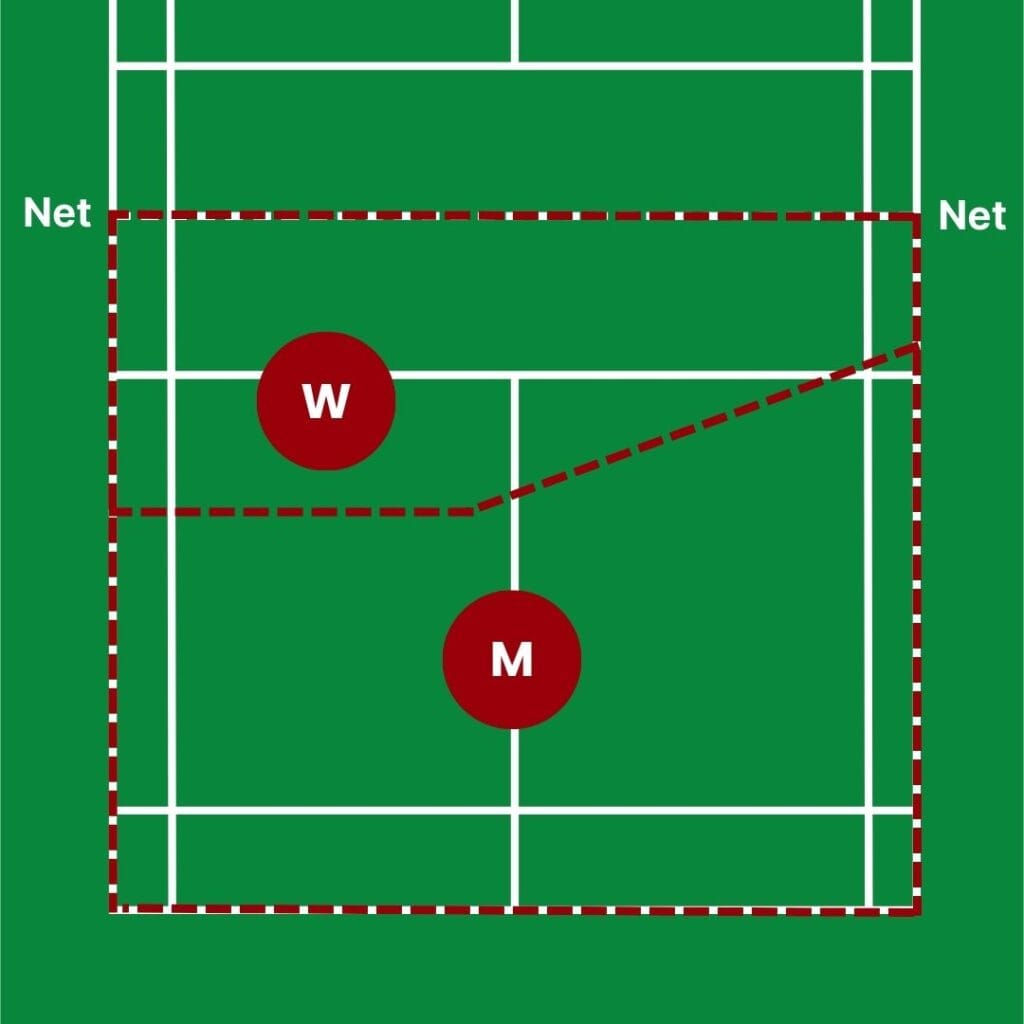How To Serve And Return Serve In Mixed Doubles – Badminton Strategy
The serve and return of serve are arguably the most important components to master in a badminton match.
In fact, we have analysed hundreds of hours of doubles matches and found that for professional players, 30-40% of rallies are over within the first 4 shots. For intermediate players, this increases to 40-50% of rallies being over within the first 4 shots!
We’ll now go through everything you need to know about the serve and return of serve in mixed doubles including:
- The initial set-up & positioning
- Where the male and female should serve to (and what to do after)
- Where the male and female should return to
The Initial Set-Up For Serving In Mixed Doubles
A traditional element of mixed doubles was always that the female starts the match by serving, or receiving. However this is no longer the case in the modern game – to gain a competitive advantage right from the start of the match, we would recommend whoever has the best serve or return of serve to start!
If the man has a better serve then it would make sense for him to start serving, likewise with the return of serve.
Positioning When The Man Is Serving
When the man is serving, the woman should stand in front of the man, so that you’re able to start the rally in your preferred formation – with the man at the back and the woman at the front.
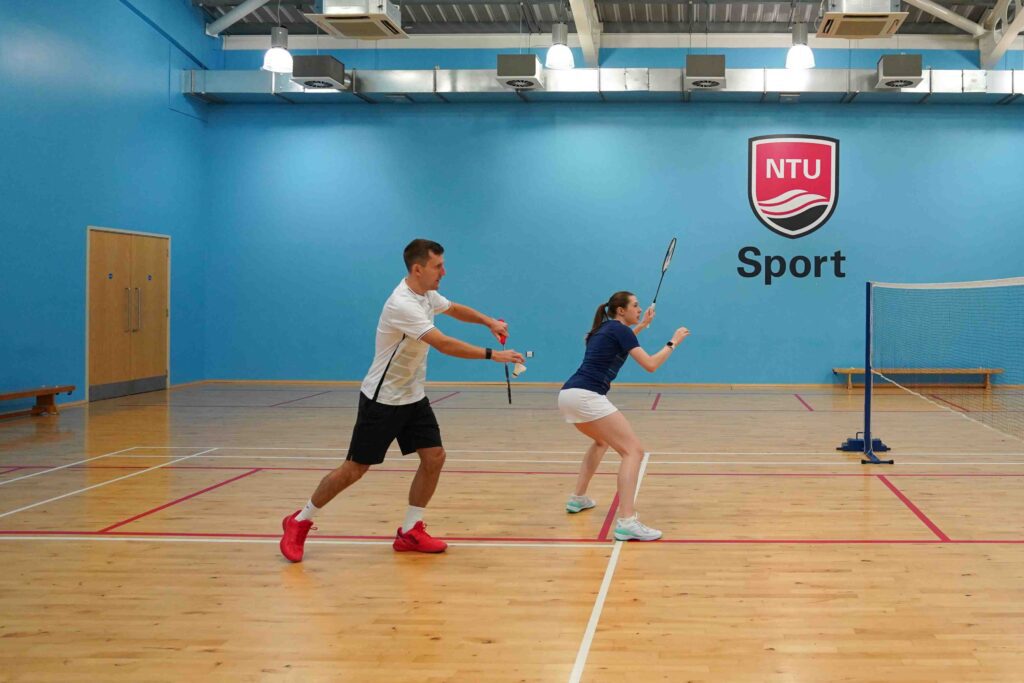
If the man isn’t actually faster or more powerful at the back of the court, then you may consider having the woman at the back instead and therefore adopt the traditional ‘level doubles’ serving position!
There is no definitive right or wrong answer when it comes to which side the woman should stand on when the man is serving.
It’s most common to see the woman standing on the opposite side to where the man is serving from. This is to enable you to cover more of the court. But even at the professional level, different pairs opt for different set ups.
However, it is important to take into account both you and your partner’s strengths and weaknesses. For example, if the female is really good at intercepting shots on the forehand side, they might favour standing on this side. Equally, if the man has a weak backhand, the woman might stand on this side to help cover it.
The woman shouldn’t stand too close to the net when the man is serving, as this can make it very difficult to intercept shots. They also shouldn’t be too far back from the net as this would make them late onto any net shots!
If your opponents are returning to the same place every time and you can’t get it from the position you are in, then you can adjust where you stand so you’re able to get it.
The woman should have her racket up at around net height to give the best chance of being early onto the third shot, and also look threatening right from the start of the rally!
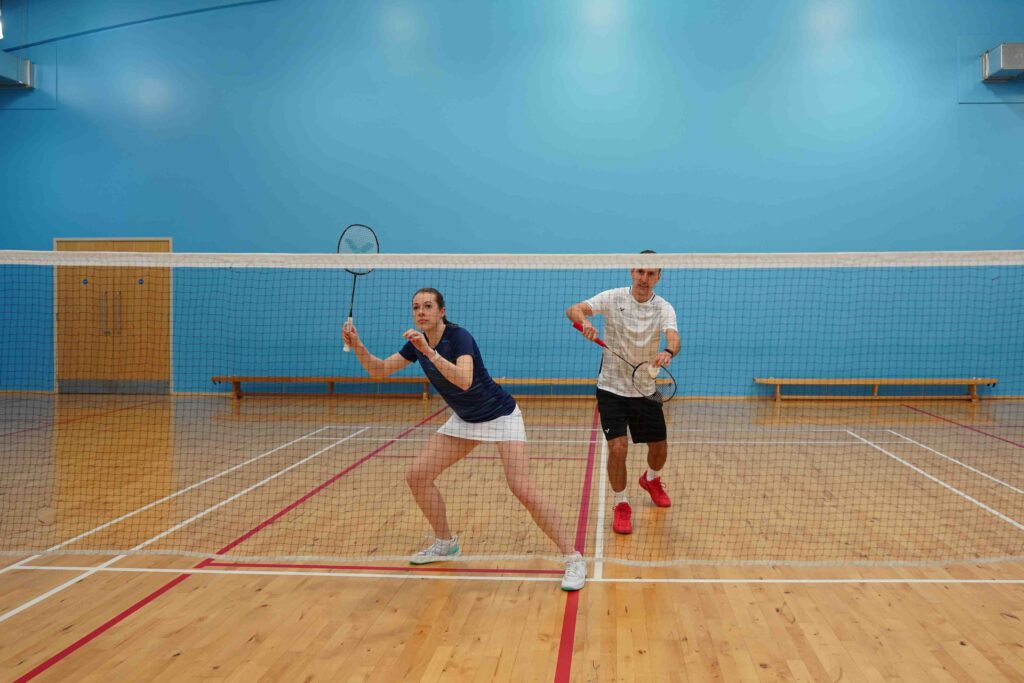
For the man’s positioning when serving, we wouldn’t recommend standing any further back than 2 racket lengths from the service line to your front foot. This is because standing too far back will give your opponent more time to react and move to where your serve is going.
Similar to the woman, the man might choose to adjust where they are standing depending on the oppositions favourite serve returns.
Positioning When The Woman Is Serving
When the woman is serving, the woman would serve in a conventional position, just behind the service line, and the man would normally stand around 2 racket lengths behind the woman so that they can cover both the mid and rear court.
However, your positioning can again depend on your opponent’s favourite returns or where your partner is serving to.
An example of this may be that if your female partner is going to serve out wide to the tramline, then you might subtly stand further over to this side to look for the straight lift.
Where you move after the serve in badminton always depends on where you serve to!
Where Should You Serve To In Mixed Doubles?
Most importantly, you should keep your serve varied! If you only ever do a short serve to the T, then your opponent can anticipate this and move their starting position forwards to be earlier onto your serve.
But of course, if one particular serve is working really well then keep going with this!
Either way, we’d highly recommend communicating with your partner where you are going to serve to as this will massively improve your organisation and mean you’re not looking for the same shot or leaving huge gaps in the court.
What should you do after a short serve?
No matter who is serving, the woman would most often look for a net shot, or for the interception of a push down the middle or to the side they’re standing on.
This will partly depend on your opponent’s habits and your serve placement, as this can determine which shots they can play.
The man will need to look for everything else!
The graphic below is an example of what both players might typically look for (unless communicated with each other beforehand) after the man has done a short serve from the right side of the court to the T.
As explained earlier in the article, this set-up might change depending on exactly where you serve to, both of your strengths & weaknesses, and your opponents return of serve habits.
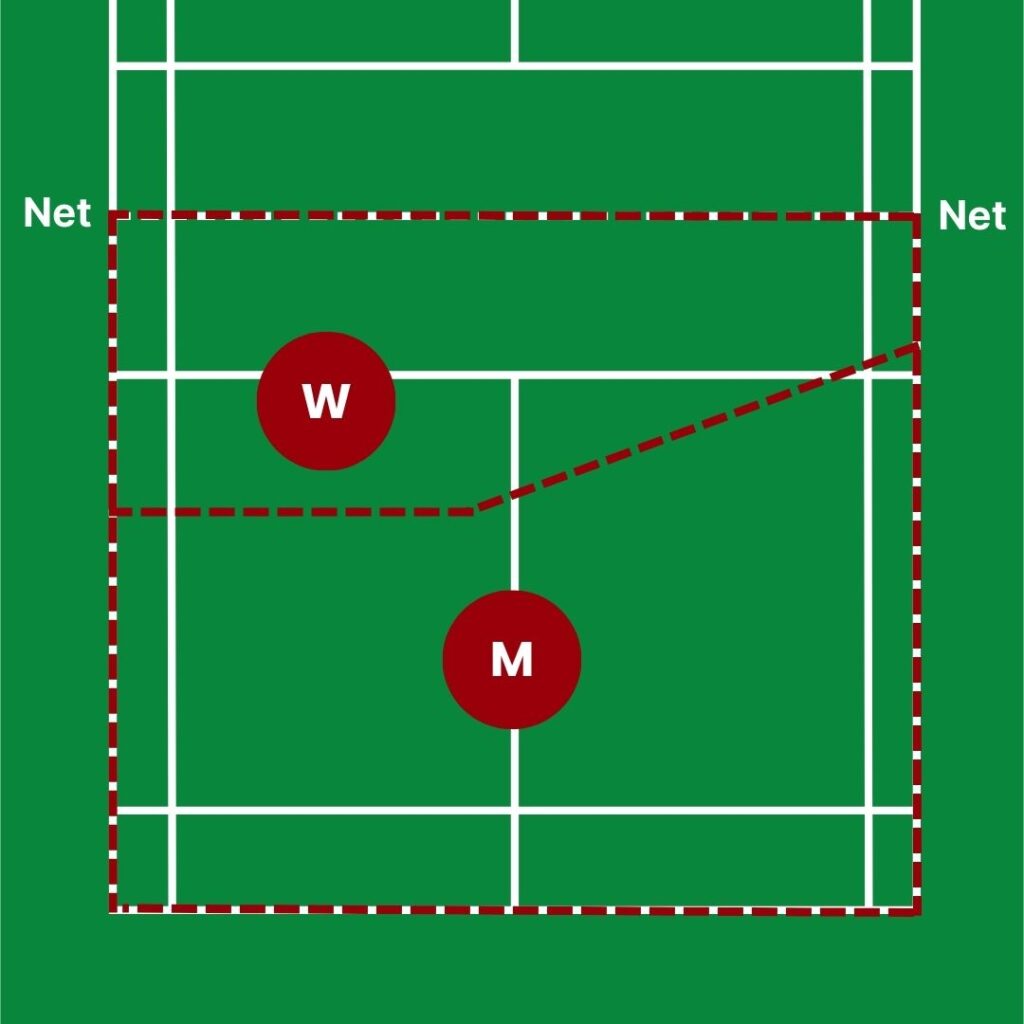
What should you do after a Flick serve?
The flick serve should be used as an attacking shot as it can create lots of opportunities and expose a lot of gaps on the court if you use it well and are organised!
Generally, after either of you have flicked out wide to the tramline, the man will cover the shortest distance (straight) as he has more time to react, and the woman will cover the longest distance (cross).
The graphic below is an example of what both players might typically look for (unless communicated with each other beforehand) after the woman has done a flick serve from the right side of the court to the tramline.

After a flick down the centre line, the woman would remain roughly in her starting position. If it’s a good quality serve, she can anticipate a shot on one side, or simply duck and allow the man to play a block to get her into the game. This serve doesn’t move the opponent as far, but it often reduces the angle of the shot they can hit.
Your positioning after the flick serve will depend on its quality and effectiveness. If it’s a good flick serve, you should be in a more aggressive position with both your racket and body.
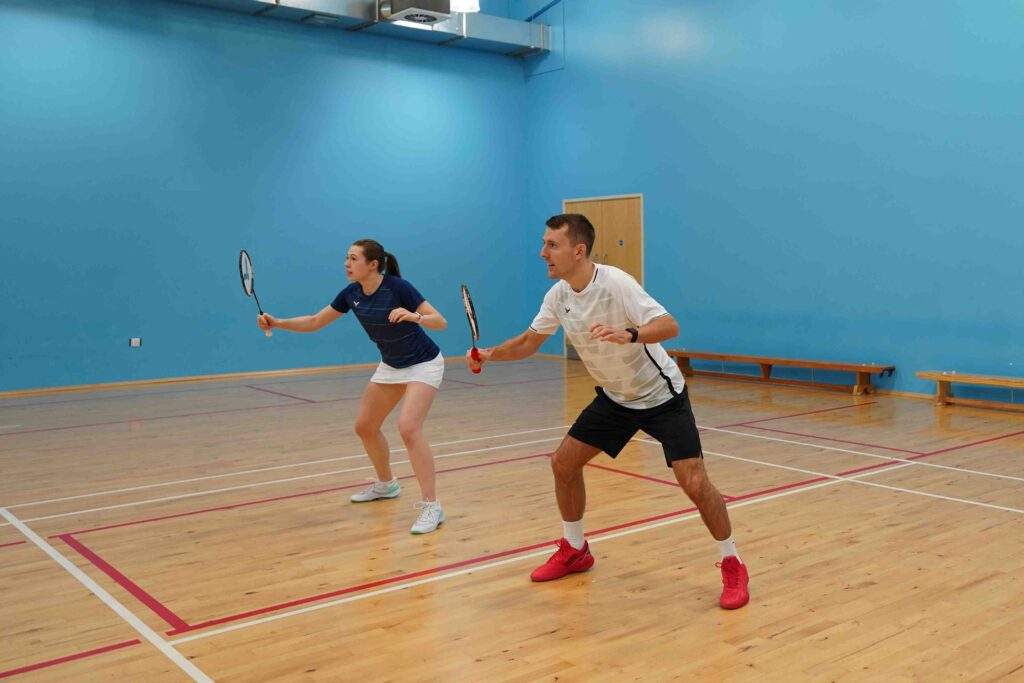
However, if the flick serve isn’t of a good quality, you will want to be in more of a defensive position like this:

There is no definitive right or wrong positioning – just make sure to communicate with your partner so you’re not both covering the same shot!
In general:
- You would look to flick serve to the woman more to move her to the rear court and get your opponents out of their ideal formation.
- If the man struggles to return the flick serve then you can keep flicking to him.
Where Should You Return The Serve To In Mixed Doubles?
Firstly, as we alluded to at the start of this article, the woman doesn’t have to start the match returning serve – it should be whoever has the best return! It’s the same for who starts serving – if the man has a much better serve than the woman, he should surely serve first!
So where should the man return to and where should he move to afterwards? Here are some possible options:
- Play a net shot return, then either stay at the net with the woman taking the rear court, or move back straight away and let the woman take the net. This will depend on how comfortable the woman is at the back of the court (don’t forget to discuss this with your partner beforehand)!
- Play a return down the side of the court, either hard into the corner or a soft return down the tramline. After this, the man would generally move back to cover the whole half of their court.
- The woman can also do these same returns, but instead of moving back, they would stay at the net.
When returning a flick serve, the man should try to attack the serve. Of course, if you’re completely off balance then it may be more appropriate to clear rather than attack the shot. But if you’re only slightly off balance, then try to attack with good placement to bring the woman into the game for the next shot whilst you recover!
For the woman, we’d recommend attacking the flick serve too, but not with 100% power (unless it’s a poor quality flick). This is because it could put you off balance and may allow your opponents to counter attack.
Shot placement is more important than power when returning a flick serve!
Learn More
We hope this article will serve you well in taking advantage of the first few shots of the rally in mixed doubles! You can watch our YouTube video on the mixed doubles serve and return for more visual examples and explanations below.
We also have 2 other mixed doubles related videos linked below in case you wanted to check them out too!
